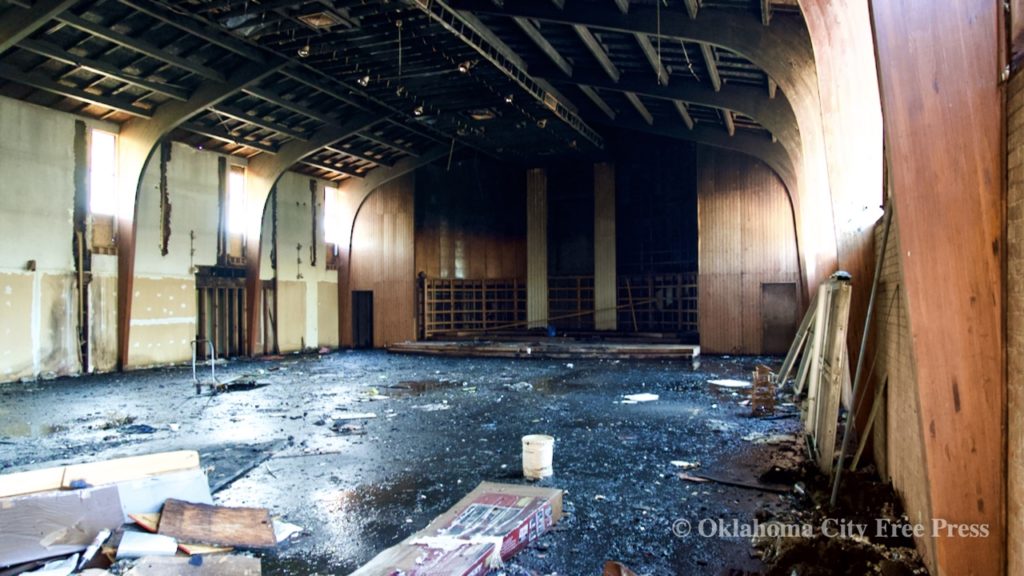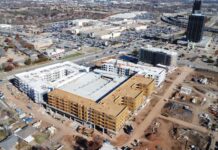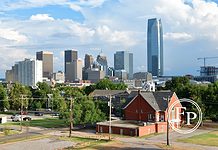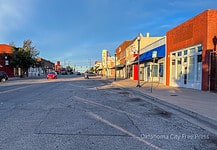Last Updated on July 17, 2022, 7:26 AM | Published: July 17, 2022
OKLAHOMA CITY (Free Press) — The City of Oklahoma City has building codes carefully honed over many years but that doesn’t make the process work by anyone’s definition of “fast.”
The OKC City Council finally approved a nearly $76,000 contract last week to demolish the burned-out church structure at 408 N.W. 30th near The Paseo after a full year since the two-alarm fire that finished off any possible usability of the structure.
Especially neighbors in the surrounding Edgemere and Jefferson Park neighborhoods have been asking why the process has taken so long, and why taxpayers are expected to foot the bill.
“People would like to believe that once a building is approved for demolition, the bulldozers are rolling up the next day,” City Code Enforcement Superintendent Chad Davidson told me. “But it just doesn’t work that way.”

Multi-month timeframe
It would be easy to see a clearly dilapidated or destroyed building and believe that it is so obviously beyond repair that immediate demolition would be the only option, but the city isn’t empowered to make those kinds of distinctions on their own. The decision to fully demolish a structure must first go to the property owner, and that means sometimes tracking them down and then attempting to give them adequate time to respond.
The exact process can vary in length and difficulty depending on the building and its ownership, but Davidson explained that it normally breaks down in these steps:
- City Code Enforcement serves a notice to the property owner to “repair or remove” the structure.
- City Council makes the determination that the structure is dilapidated at a public meeting which the property owner can attend.
- The property owner is given 30 days to submit a plan of action for either repairing and rehabilitating the structure or paying for and coordinating its safe demolition. If that plan is approved, the owner is given reasonable time to begin repairs.
- If no plan is approved or submitted, the city will begin taking bids from contractors for demolishing the structure. Once a bid is approved, notice of that cost will be served to the owner and demolition will begin shortly thereafter.
All of this, understandably, can take months to enact, even in the simplest of scenarios, meaning that even after a building has been deemed dilapidated, it is likely to still sit for weeks or months before demolition.
According to Davidson, that is because complete demolition and removal of a building is seen by the city as a last resort.
“If there is a person that’s interested in rehabilitating that building, we always want to give them an opportunity to do that,” he said. “I think we are all into preservation. Once that building is gone, we don’t get it back.”

Long-term reimbursement
As we can see from the city’s newly approved contract with Midwest Wrecking Company for $75,920 for the removal of the NW 30th church building, however, sometimes the cost falls to the city and taxpayer dollars, at least for the present.
That’s because often the owner of a dilapidated structure will either refuse to cover the cost or will not be able to pay the amount.
Davidson says that eventually that money will be repaid to the city, but that the road to reimbursement is an even longer one.
“If the city ends up demolishing that property, they will then send out a bill to the property owner and they’ll have 180 days to pay that here in our office, and after that they will certify a lien on that property with the county assessor’s office,” he explained. “The city will be asking that they pay that in full, and if they do not pay, then of course it’ll accrue interest over time, and then eventually, years down the line, the county could sell their property.”
Of course, this means that if the property owner is willing to accept the loss rather than cover the cost of demolition, they can just refuse to pay and let the county take ownership in order to sell. Even though the lien is added to the property’s price in the amount of the demolition cost, if the now-empty property takes years to sell, then the city will be waiting years to see those tax dollars reimbursed.
What happened?
A large available property on the line between the Edgemere and Jefferson Park neighborhoods is unlikely to sit for years without selling, though, so what happened with the burned-out church building and why did it take a full year to approve demolition?
It’s all because of a complicated property dispute that surfaced after the fire.
Though the fire that left the building definitively uninhabitable took place on July 5th, 2021, one year to the day before the City Council finally approved its removal, Davidson says the ongoing dispute over ownership continually dragged the process out.
“Once we were made aware there was a conflict of ownership, we wanted to give both parties ample time to get it worked out,” he told me. “We of course had to take time to get in touch with them both.”
The concern among neighborhood residents, in addition to the enduring eyesore that the destroyed structure created, has been the lack of any clear or meaningful safety precautions around the property. As the remains of the building are still on private property, Davidson says that safety measures would still be left up to the ownership.
“The first guy that we got in touch with that said he owns the property responded and said that he’d try to rehabilitate and repair the building and put some safety measures up, and so we tried to give him time to make that happen,” he told me. “And he did a few initial things like taking out some walls, but then it dropped off and just didn’t get done.”
With the approval to demolish the building now granted by the City Council, and with the dispute over ownership still ongoing (the county assessor’s website currently lists the property as “inactive,”) it seems likely that the county will take ownership of the lot and sell it themselves. There’s no way to tell how long that process could take, however.
As for how long it will be before the remains of the structure are demolished and removed, Davidson claims that residents can expect it gone sooner rather than later.
“Obviously there are some permits that have to be worked out now,” he explained, “but I’ll say that once Midwest Wrecking gets approved for a demolition, they usually get the ball rolling pretty quickly.”
Brett Fieldcamp has been covering arts, entertainment, news, housing, and culture in Oklahoma for nearly 15 years, writing for several local and state publications. He’s also a musician and songwriter and holds a certification as Specialist of Spirits from The Society of Wine Educators.










